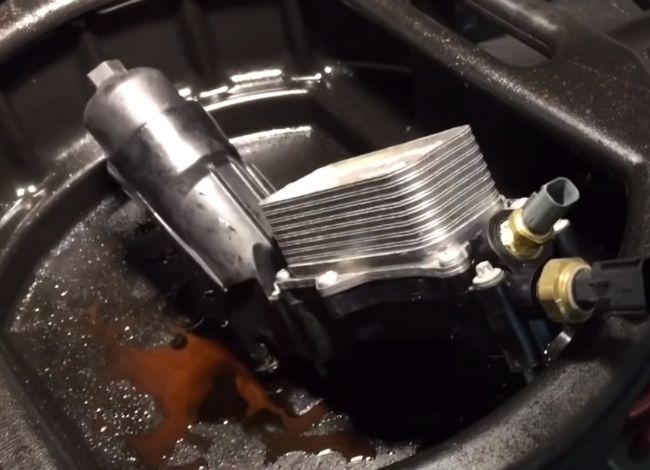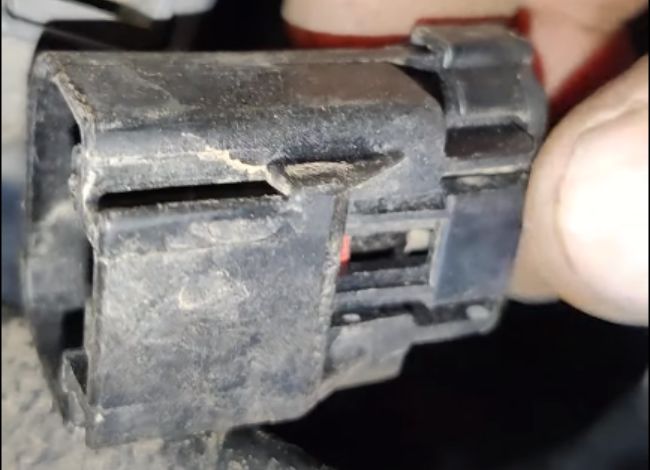Last Updated on April 22, 2025
The P06DD OBD2 trouble code indicates a fault in the engine oil pressure control system, officially described as:
“Engine Oil Pressure Control Circuit Performance.”
This diagnostic code is commonly triggered when the Powertrain Control Module (PCM) detects that the engine oil pressure is either too low or too high due to a malfunction in the oil pressure control circuit. This issue is particularly common in modern vehicles that utilize a dual-stage oil pump, designed to operate at both high and low pressures depending on engine demand.
The dual-stage oil pump is electronically controlled and requires accurate input from various sensors, including the oil pressure sensor. If the PCM detects that the oil pump isn’t transitioning between pressure stages properly, or the oil pressure doesn’t match the expected values, it will store the P06DD fault code and trigger the Check Engine Light.
Why Is It Important?
Oil pressure plays a crucial role in engine performance. It ensures that moving parts are lubricated, preventing metal-on-metal contact that can cause severe damage. When oil pressure is compromised, the engine is at significant risk of wear or even catastrophic failure.
Affected Vehicles
The P06DD code is particularly known to affect:
- Dodge Journey
- Jeep Wrangler and Grand Cherokee
- Chrysler 200 and 300
- Chevrolet Equinox, Malibu
- Buick and GMC models
These models often share a similar dual-stage oil pump design, increasing the likelihood of this issue across manufacturers.
Symptoms of the P06DD Code
When this code is active, you may notice a variety of performance-related symptoms, including:
- ✅ Illuminated Check Engine Light
- 🚫 Reduced engine performance
- 🔊 Unusual engine noise (rattling, knocking)
- 🚗 Hard starts or failure to start
- 🚘 Rough idling and stalling
- 🛠️ Oil pressure warning light (in some models)
These symptoms indicate that the engine is not receiving proper lubrication or is struggling to maintain internal pressure due to a control system fault.
Main Causes of the P06DD Code (Elaborated)
Several potential issues can trigger the P06DD trouble code. Understanding these causes can help you take corrective measures more accurately:
Low Engine Oil Level
Insufficient oil can prevent the oil pump from generating the required pressure, triggering a low-pressure reading. This could be due to leaks, evaporation, or infrequent oil changes.
Contaminated or Degraded Engine Oil
Engine oil that is dirty, sludgy, or has broken down chemically can no longer flow properly. Thick or contaminated oil increases internal resistance and lowers effective lubrication, affecting pressure regulation.
Faulty Oil Pressure Sensor
This sensor relays real-time oil pressure data to the PCM. A faulty or failing sensor can send inaccurate readings, prompting the system to detect a problem even if actual pressure is normal.
Electrical Issues
Broken, frayed, or corroded wiring connected to the oil pressure sensor can interfere with accurate signal transmission. Similarly, loose or damaged connectors can intermittently cut off communication between the PCM and the sensor.
Malfunctioning Dual-Stage Oil Pump
A dual-stage oil pump increases or decreases oil pressure based on the engine’s operating conditions. If the pump fails mechanically or the actuator inside becomes stuck, the system cannot maintain proper pressure.
Clogged or Inefficient Oil Filter
If the oil filter is restricted, oil may not flow freely through the system, reducing pressure. Non-OEM filters or ones with incompatible flow characteristics can also cause issues.
PCM or Software Glitches
The PCM is the brain behind interpreting sensor data and controlling oil pressure. If the internal programming becomes corrupted or outdated, it can cause misdiagnosis or trigger a false fault code.
How to Diagnose the P06DD Code (Elaborated)
Accurate diagnosis requires a multi-step approach. Here’s how to pinpoint the issue:
Perform a Complete Code Scan
Use an advanced OBD2 scanner to read all stored codes, not just P06DD. Look for related codes like P0520 (Engine Oil Pressure Sensor/Switch Circuit Malfunction) that might help narrow down the issue.
Review Freeze Frame Data
Most OBD2 tools will show freeze frame data, including engine RPM, load, and oil temperature when the fault occurred. This context is vital for identifying intermittent or condition-specific problems.
Inspect Oil Quality and Level
Pull the dipstick and check:
- Is the oil at the correct level?
- Does it look dirty, sludgy, or metallic?
- Is there a fuel or coolant smell? If yes, change the oil and filter immediately.
Test Oil Pressure Manually
Use a mechanical oil pressure tester:
- Remove the oil pressure sensor.
- Attach the gauge.
- Start the engine and compare actual pressure readings to manufacturer specifications. If actual pressure is fine, the issue could be the sensor or wiring.
Inspect the Oil Pressure Sensor and Wiring
- Use a multimeter to test for proper voltage and resistance.
- Wiggle the connector gently while watching the scanner to detect any drop-outs.
- Replace the sensor or connector if values fluctuate abnormally.
Evaluate the Oil Pump
Remove the oil pan if necessary to inspect the pump:
- Are the gears worn?
- Is the solenoid functioning?
- Does the pump change stages correctly? Replace the oil pump if any issues are found.
Check Timing Components
In some vehicles, a loose or stretched timing chain can alter the rotation speed and affect oil flow. Inspect the chain and tensioners for wear.
Inspect PCM and Update Software
If all hardware components are working, check for PCM software updates from the manufacturer. Flash the PCM with the latest firmware or consider replacing it if it shows signs of internal failure.
Step-by-Step Fixes for P06DD Code (Elaborated)
Follow these solutions based on your diagnosis:
✅ Step 1: Change Engine Oil
Use premium, manufacturer-recommended oil (correct weight and viscosity). Drain old oil thoroughly and replace with new oil and an OEM-approved oil filter.
✅ Step 2: Replace Oil Filter
Always replace the oil filter with a compatible OEM-grade one. This ensures proper oil flow and filtration, especially for vehicles with high-sensitivity pressure systems.
✅ Step 3: Replace Oil Pressure Sensor
If diagnosed as faulty, install a new oil pressure sensor. Ensure it is a genuine part to avoid compatibility issues.
✅ Step 4: Repair or Replace Damaged Wiring
- Repair any visible wire damage.
- Replace corroded or broken connectors.
- Use dielectric grease to protect connections from moisture.
✅ Step 5: Replace Dual-Stage Oil Pump
If the pump fails to build adequate pressure or transition stages, replace it. This is a labor-intensive job and may involve dropping the oil pan or timing cover.
✅ Step 6: Reprogram or Replace PCM
If diagnostics point to the PCM:
- Reflash the PCM using dealer tools.
- If reprogramming doesn’t resolve the issue, consider replacing the PCM entirely.
✅ Step 7: Replace Timing Chain (If Needed)
A stretched timing chain can affect oil pump timing. If there’s slack, replace the chain, guides, and tensioner for reliable operation.
Cost to Fix P06DD Code
| Component | Estimated Cost (Parts + Labor) |
|---|---|
| Oil Change | $50–$100 |
| Oil Pressure Sensor | $100–$250 |
| Oil Pump Replacement | $400–$1,200 |
| PCM Reprogramming | $100–$300 |
| Wiring Repair | $50–$150 |
FAQs: P06DD Code
What does the P06DD code mean exactly?
It means the PCM has detected an issue with the engine oil pressure control system—often related to a dual-stage oil pump or pressure sensor fault.
Is it safe to drive with the P06DD code?
Not recommended. Driving with oil pressure issues can cause severe engine damage.
What are the common symptoms?
Check engine light, low oil pressure warning, poor performance, stalling, engine noise.
Will an oil change fix it?
Sometimes, yes—especially if the oil was dirty or too low.
How urgent is this issue?
Highly urgent. Ignoring this code can lead to major engine damage.
Tips for Preventing P06DD Code
- 🛢️ Change your oil regularly (follow manufacturer intervals).
- 🧰 Use correct oil type and viscosity.
- 🧽 Keep the oil system clean (avoid contaminants).
- 🔧 Use OEM oil filters and sensors.
- 💻 Update your PCM software if a fix is issued by the manufacturer.
Final Thoughts
The P06DD diagnostic code is not something to be taken lightly. It directly affects how your engine is lubricated and how efficiently it performs. From sensor malfunctions to oil pump failures, this code requires a thorough inspection and prompt repair to avoid long-term damage.
By following the steps above—diagnosing accurately, using quality parts, and sticking to proper maintenance—you can restore your vehicle’s performance and keep the engine protected. If in doubt, always consult a certified mechanic to handle complex repairs, especially those involving PCM programming or oil pump replacement.
Related Trouble Codes
P0341 often appears with or is linked to other error codes. It’s useful to know them:
- P0016 – Crankshaft Position-Camshaft Position Correlation Bank 1 Sensor A
- P0017 – Crankshaft Position-Camshaft Position Correlation Bank 1 Sensor B
Kevin Nicholas is an automotive technician who is a genius at software and hardware-related issues. He manually tested more than a hundred OBD scanners and gave his honest opinion on whether the device was worth the money or not. His in-depth OBD review articles help people choose the right product, whether it is a European, American, or Asian vehicle. He completed his Automotive Specialized Training Course at Universal Technical Institute and has more than 15 years of experience in the field.
